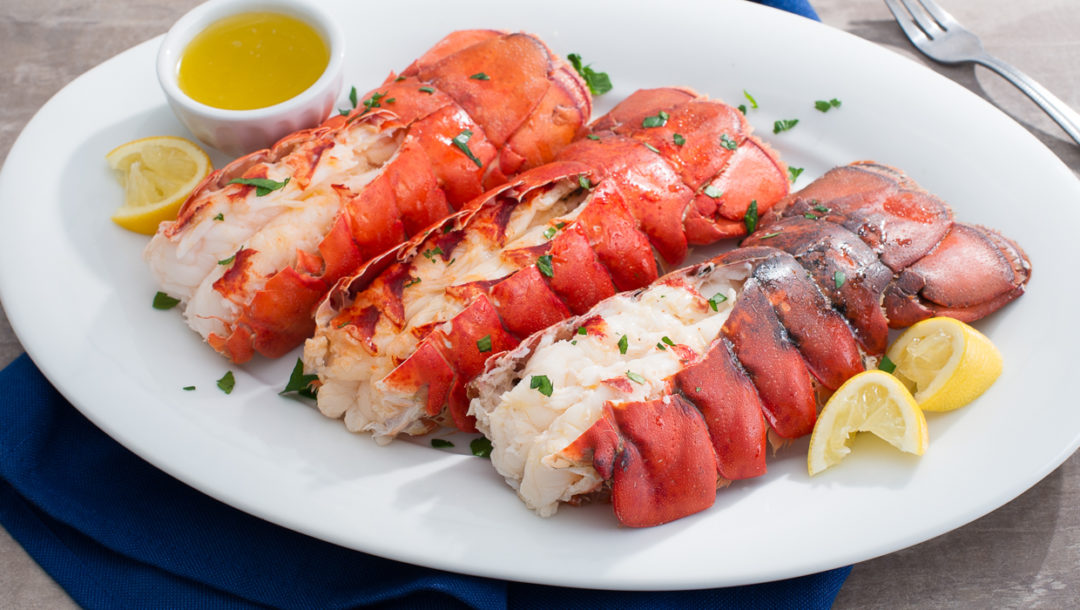Learn how to cook lobster tail five different ways! I’ve got all the popular methods covered like boiling, steaming, baking, broiling, and grilling. I’m here to make sure you nail the perfect crustacean for your special occasion.
Lobster is regarded as the most elegant, high-end type of seafood that’s usually reserved for special occasions at pricey restaurants. The tail, or abdomen, is the prized section due to its abundance of meat, and when dipped in rich melted butter is a blissful feast.
Making lobster at home might seem a little intimidating, but I’m going to teach you easy tips to prepare, season, and cook using whichever method you prefer. Let’s go over the tips below to ensure delicious results every time!
The taste of the cooked lobster is slightly sweet and briny, and because of its long muscle fibers surrounded by connective tissue, it has a similar texture as shrimp. Like other fish and crustaceans, lobster flesh cooks in just a few minutes and can turn tough and rubbery if overdone.
Table of Contents
How each cooking method varies
Boiling – Quickly cooks the meat in hot water, but the flavor can get diluted.
Steaming – Rapidly yields a clean flavor for those who like to customize their toppings
Baking – Gives a delicate texture due to gentle steaming at a consistent temperature in the oven.
Broiling – Lightly browns the shell and meat for more depth in flavor.
Grilling – Adds a bit of smokiness and char to the meat and shell.
Preparing and thawing frozen lobster tails
You can defrost frozen lobster tails overnight in the refrigerator. Alternatively, place them in a bowl of cold water for 30 minutes. For larger tails, drain the water after 30 minutes and add new freshwater. Repeat the process until the flesh is flexible and no longer icy.
Whole tails should be rinsed and dried before cooking. When cutting open the shell you may notice a dark line running down the center of the flesh. That’s the digestive tract and it needs to be removed. Wash and dry after cleaning.
Butterflied lobster tails
The most elegant and impressive way to cut and prepare the tail is to butterfly the lobster. Cut the tail down the middle, open up the shell and pull the meat out. Just make sure to leave a small part attached at the end of the tail fin.

The meat is then layered on top of the shell. When cooked the shell appears to be reconnected with the meat gorgeously sitting on the top. This makes it much easier to season the flesh and eat it too!
Seasonings
Depending on the cooking method, you can season the meat before or after it’s cooked, or both! When broiled, grilled, or steamed, brush the flesh with melted butter and sprinkle with salt, pepper, paprika, or your desired seasonings. When boiling the lobster, remove it from the shell and season or serve with melted butter and lemon wedges.
Boiled lobster tail
Cook whole uncut lobster tails in boiling salted water. Boiling efficiently cooks and tenderizes the flesh, however, it can dilute some of the briny flavors. That’s why I add some salt to the water for seasoning. This is also a great way to parboil large lobster tails before broiling or grilling to kick start the cooking so that the meat cooks more evenly, and prevents over-cooking.
Add enough water to a large pot to cover the lobster tails. Bring the water to a boil, then carefully add the tails to the pot. Cook until the meat is translucent, pinkish-white, and shells are red, about 1 minute per ounce. Drain and allow to cool just enough to handle before opening the shell to remove the meat.
Steamed lobster tail
Steaming is a quick way to cook the lobster using superheated moist steam. The high heat effectively cooks and releases the meat from the shell, making it easier to remove if left inside. The meat can be kept in the shell, then shell cut open, or shell cut open and meat placed on top.
The only downside is that this method yields a bland flavor, which can then be seasoned further after cooking. It only takes about 45 to 60 seconds of cooking time per ounce. Keep a close eye on the lobster, it can overcook easily if left too long.